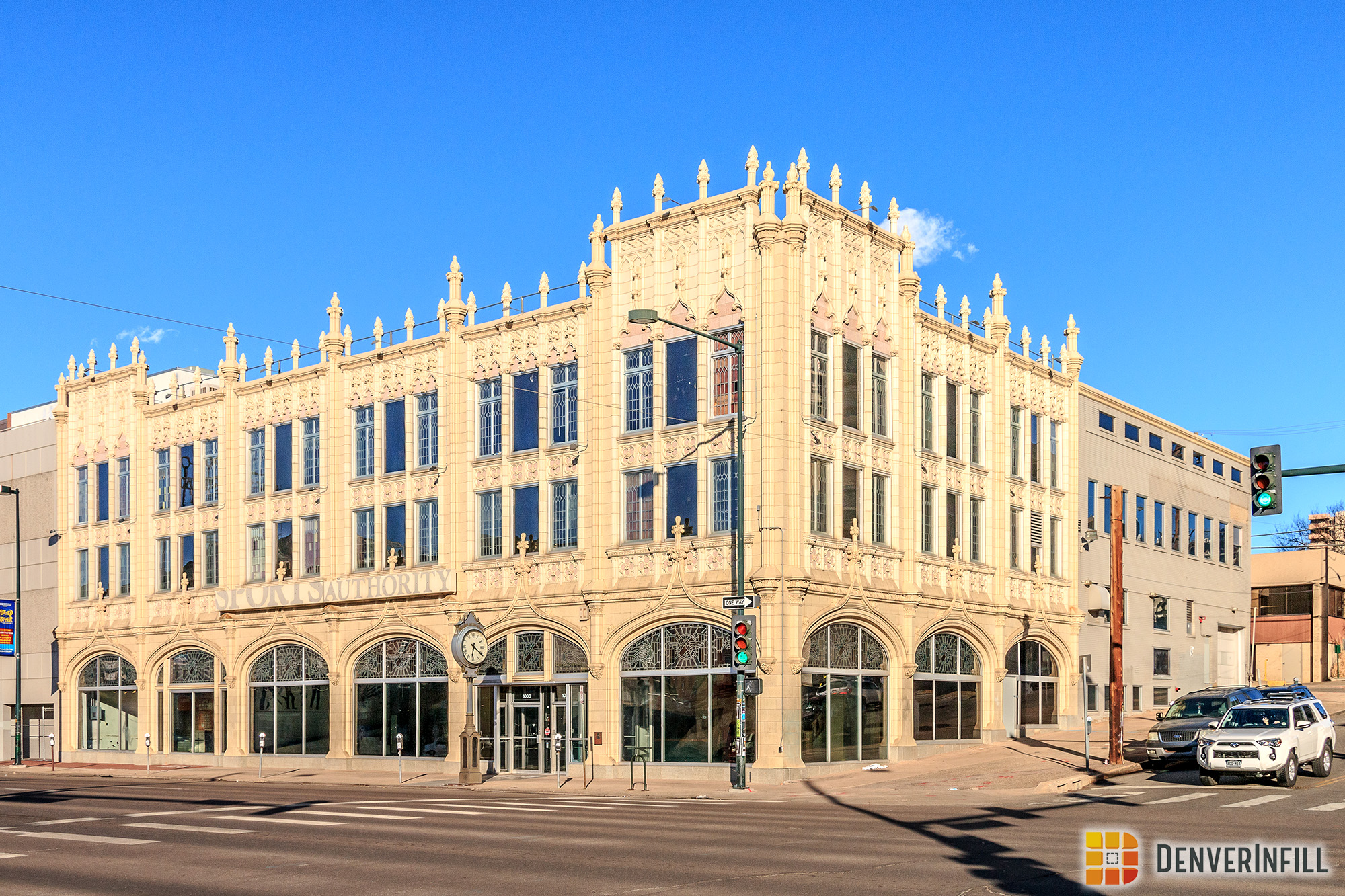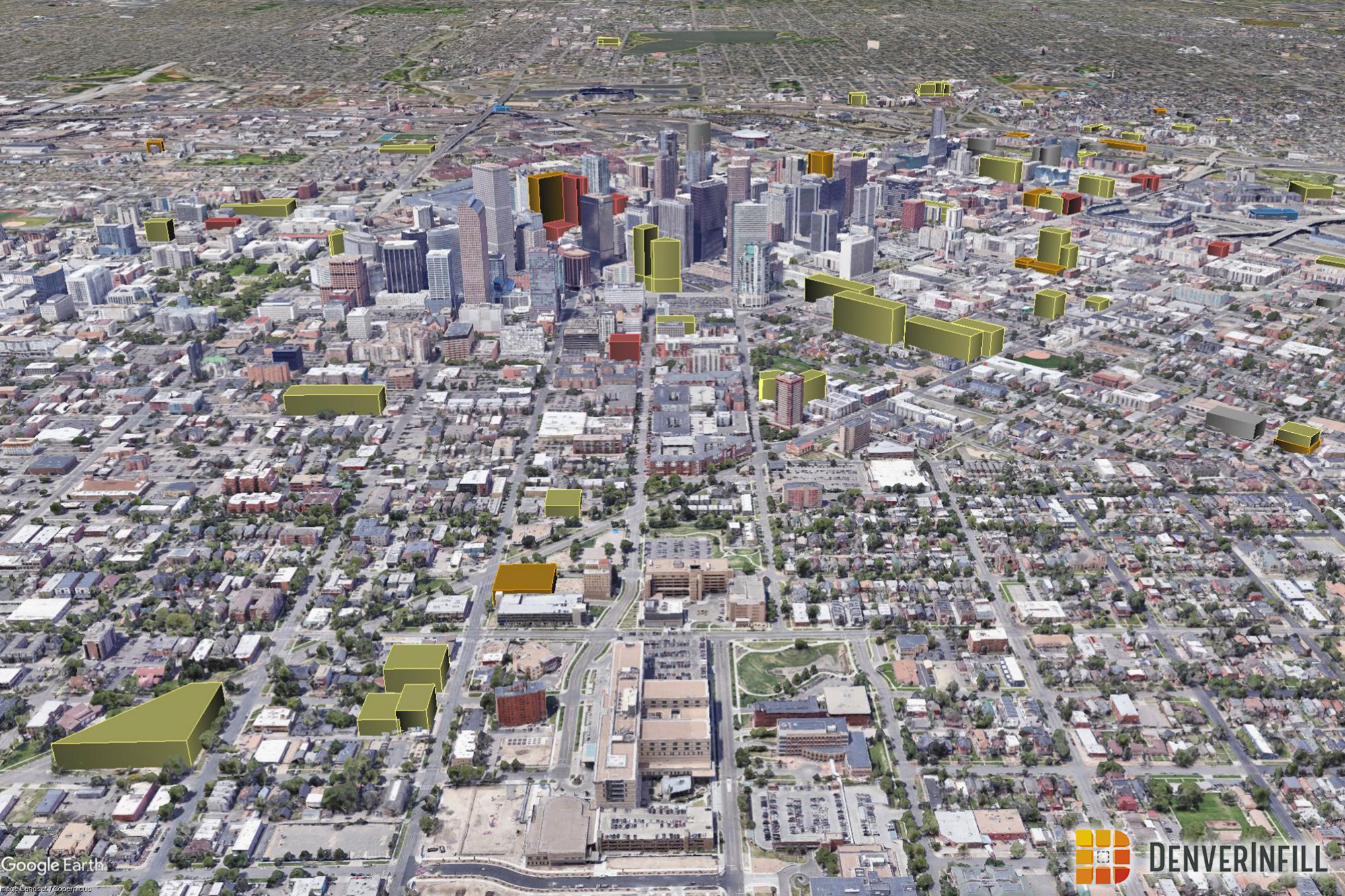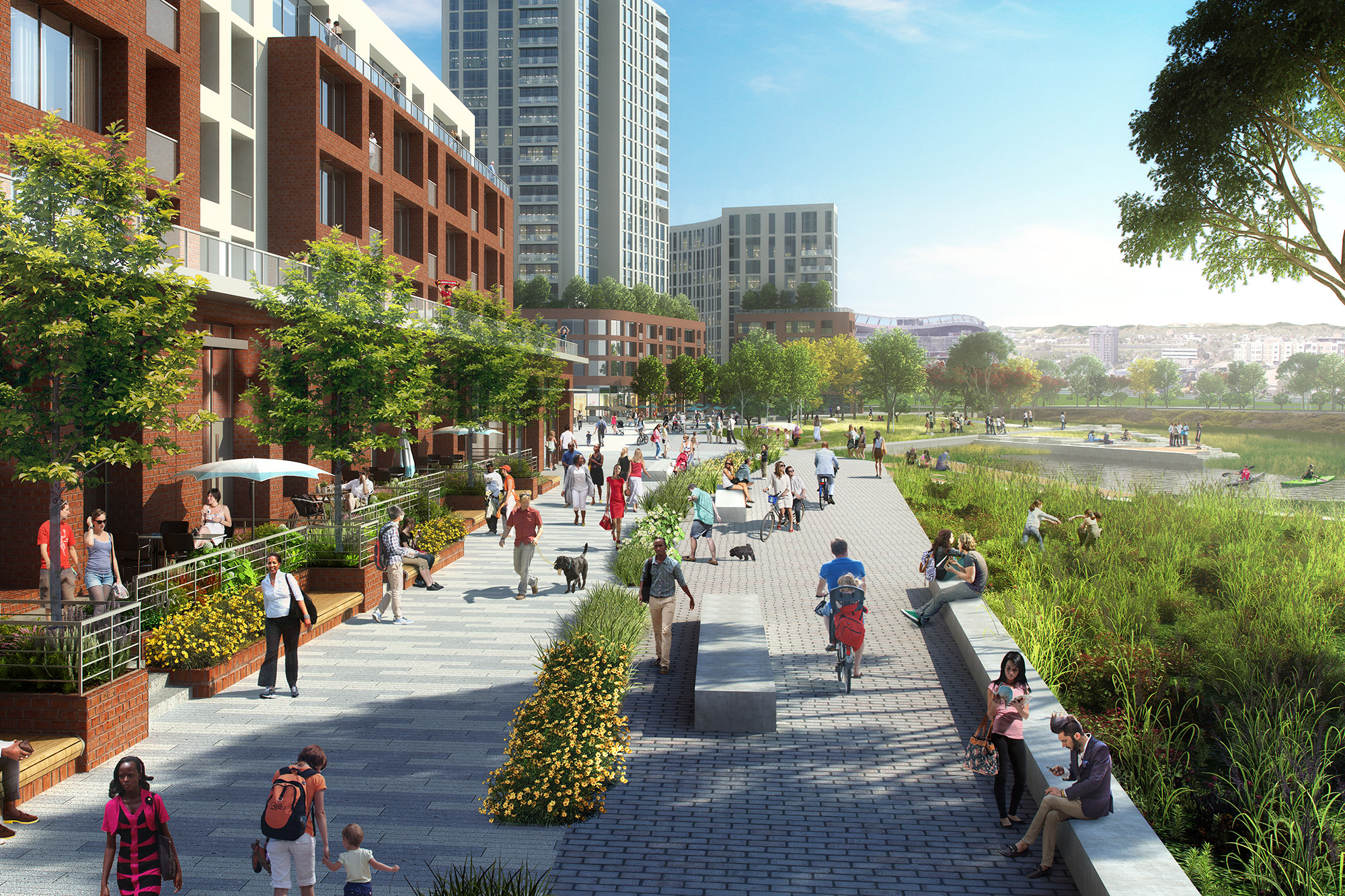The Urban Land Institute, the nation’s premier urban real estate development organization, begins its national conference in Denver this morning. The conference brings around 7,000 prominent developers, architects, urban planners and other real estate professionals to the Mile High City. The ULI doesn’t normally hold its big fall conference in cities Denver’s size, opting usually for only the largest cities like New York, Chicago, and LA. But they chose Denver anyway. Why? The city is at the forefront of virtually every major trend in urban real estate development today:
Downtown Revitalization. Denver is known for its heavy investments in making its Downtown attractive, active, and engaging. New convention centers, arenas, stadiums, museums, transit, infrastructure… you name it, Denver’s done it in the Downtown area. Downtown Denver is generally regarded as one of the most successful and enjoyable major city downtowns in the country, and it’s only getting better. Yet, there’s still plenty of room for improvement, so Denver makes for a good case study for cities seeking to revitalize their downtowns.
Infill Development. How big of a deal is infill development in Denver? There’s a little website called DenverInfill.com that can give you a feel for the scale and intensity of the city’s urban infill development scene. There have been over 13,000 residential units completed, proposed, or under construction since 2000, and that’s just within a two-mile radius of the center of Downtown, and that doesn’t include renovations or adaptive reuse projects either. Then, there’s the largest urban infill project in the United States, the 7-square mile Stapleton redevelopment, with a planned buildout of 12,000 residential units, 1,100 acres of parks, 3 million square feet of retail, and 10 million square feet of office.
New Urbanism. We’ve come a long way since Seaside, haven’t we? As New Urbanism has gone from a novel, experimental idea in urban development to a full-fledged national trend, Denver stands as a leader in building new communities in the New Urbanist manner. One can debate about how urban some of these new communities really are, and argue over the details of the architecture, street widths, mix of uses, etc., but major New Urbanist developments such as Stapleton, the Lowry redevelopment, Belmar, Bradburn, and Prospect, just to name a few, reflect the degree to which New Urbanist developments have become a major force in real estate development in the Mile High City.
Transit-Oriented Development. TODs in the Denver area have been slow to take off, as only a couple of projects have been developed along our existing light rail corridors over the past ten years. But with the passage of FasTracks, a $4.7 billion transit package that includes 119 miles of rail transit and 18 miles of bus rapid transit over the next 10 years, and the completion next month of the 19-mile Southeast light rail line, TODs have now become a significant force in real estate development in the Denver region. Just along the Southeast line, major TODs are planned at the Broadway, Belleview, Arapahoe, Dry Creek, and Lincoln Avenue stations, totaling thousands of residential units and millions of square feet of office, retail, hotel, and other uses. And that doesn’t even include the FasTrack corridors, of which about 50 of the new stations have TOD potential. Consequently, virtually every community in the Denver area with a FasTracks line is going through a TOD planning process, and developers have snatched up land around virtually every proposed transit station. Over the next 20 years, Denver will begin to fundamentally alter its patterns of land development from automobile-based sprawl to transit-based compact development.
So, a hearty “Welcome to Denver!” to all our Urban Land Institute visitors. I hope you enjoy your stay in the Mile High City and, after the conference is over, please come back and invest in our city and contribute to Denver’s remarkable transformation into one of the nation’s most desirable, sustainable, and vital cities. You could start with a few of our surface parking lots Downtown!









